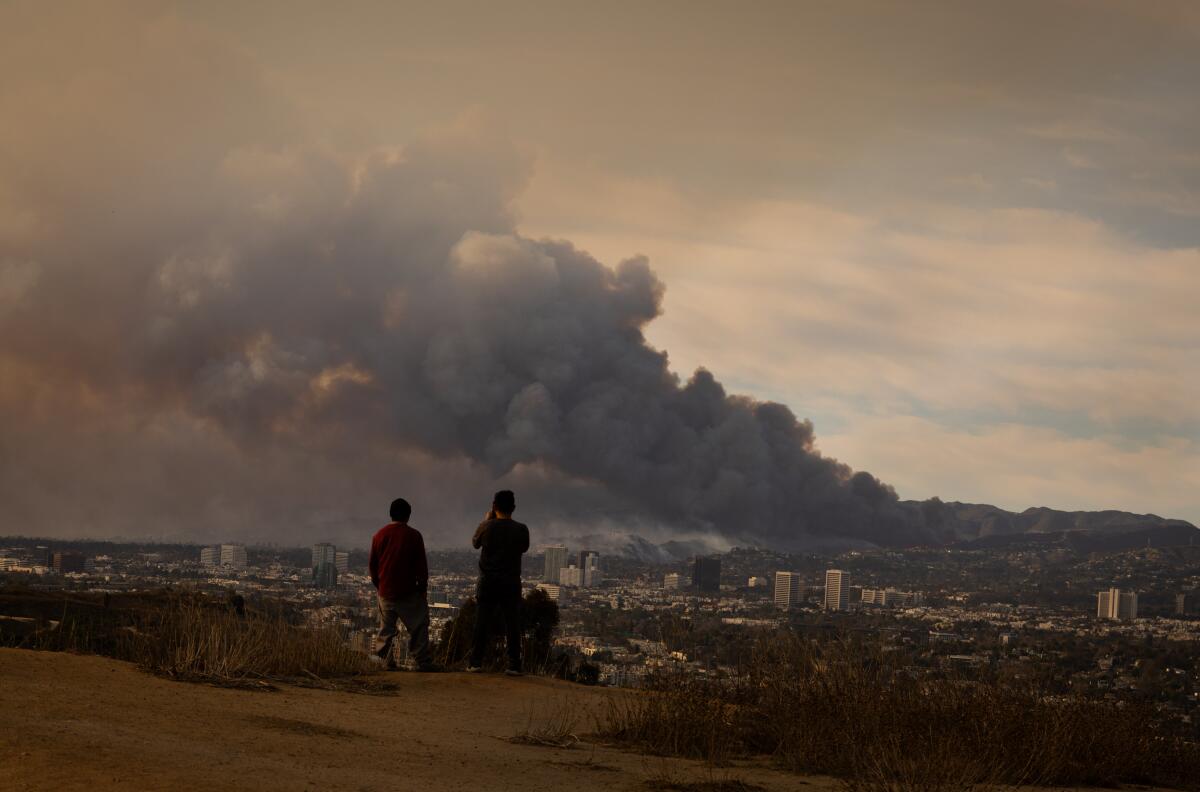LOS ANGELES — UCLA researchers have launched 20 new air air pollution screens throughout northwest Los Angeles County to higher perceive how a lot advantageous ash and coarse mud are being kicked up within the Palisades hearth burn space as reconstruction advances. The community stretches from Topanga State Park by Brentwood and Santa Monica, updating each 5 to 10 minutes on a web-based map.
“We heard clear community needs — real-time data, user-friendly design, and granular neighborhood coverage,” mentioned Yifang Zhu, a professor within the UCLA Division of Environmental Well being Sciences and director of the challenge. Zhu had seen that Caltech had put up an identical community for areas affected by the Eaton hearth.
The brand new sensors observe airborne particulate matter — a posh combine of gear reminiscent of soil, mud, and metals — in two important sizes: advantageous, PM 2.5, no bigger than 2.5 microns, or roughly 1/30 the width of a human hair, and coarser particles, PM 10, roughly the dimensions of a cotton fiber.
A employee folds and tapes a tarp carrying particles from a home in Pacific Palisades on June 25, 2025.
(Myung J. Chun / Los Angeles Instances)
All are sufficiently small to be inhaled into the nostril, throat, and higher airways and may trigger a variety of well being points. PM 2.5 is linked to bronchial asthma assaults, untimely dying in addition to acute and continual bronchitis. Though much less studied, PM 10 has been tied to hostile well being results, particularly amongst infants, youngsters, and older individuals who have lung or coronary heart situations.
The general public already can see real-time air air pollution ranges on a number of web sites, together with these of the U.S. Environmental Safety Company, the South Coast Air High quality Administration District, Purple Air and IQAir. The issue, researchers say, is that these typically don’t observe the bigger PM 10 particles, the sort extra more likely to be kicked up into the air by development.
“The January wildfires were massive and they highlighted gaps that we in the air pollution science community knew about, but the larger community wasn’t necessarily aware of,” mentioned Rima Habre, an affiliate professor of environmental well being sciences at USC and collaborator on the challenge. After the fires, folks have been taking a look at air high quality readings from the present community, and couldn’t inform how a lot of the soiled air was as a result of bigger particles.

Wildfire smoke from the Palisades and Eaton fires Jan. 8, 2025, blankets Los Angeles County, prompting college closures and triggering air high quality advisories throughout the area.
(Allen J. Schaben / Los Angeles Instances)
The brand new community, generally known as CAP AIR, was designed to offer hyperlocal and real-time information. The dashboard is shade coded from inexperienced for good air to darkish crimson for hazardous air to assist residents rapidly interpret the danger.
“You can see PM 10 levels spike if trucks are hauling debris nearby, and wait until they drop again to go out and jog along the road,” Habre mentioned.
Invoice Magavern, coverage director of the Coalition for Clear Air, identified that California has the worst air within the nation. “It’s important for people to know how much particle pollution they’re being exposed to. So we strongly support expanded monitoring and making the information available as widely as possible so people can make informed decisions about when and if they spend a long time outside, when they’re doing strenuous activities like exercising, when they might want to not have their children be outside playing.”
“Sometimes people are anxious or scared about what’s going on — it’s just because of a lack of information,” Zhu mentioned. “Now, this network can provide that information.”


